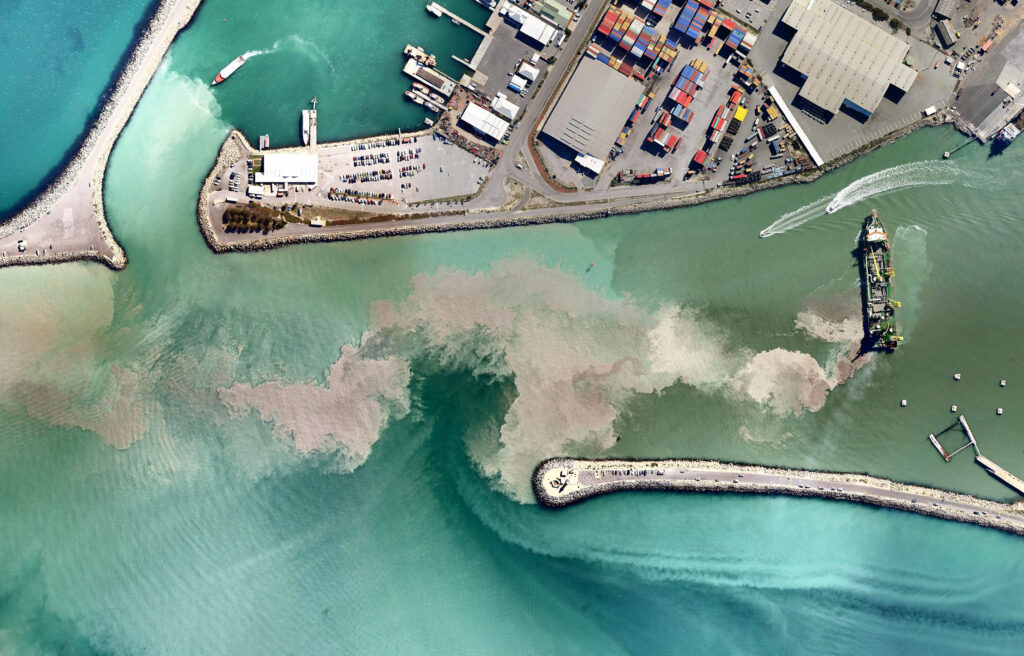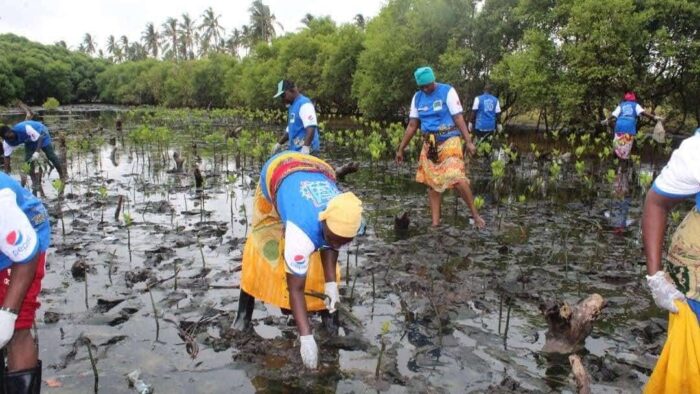Story highlights:
- Sand is both an essential part of the ocean ecosystem, and the rapid industrialisation of the coastal and offshore environment.
- The relocation of large volumes of sand often results in habitat destruction, loss of biodiversity and coastal erosion.
- Recognising the critical role of ocean sand must become a key priority for stakeholders involved in ocean planning.
THE SANDS OF TIME: Sand is the second most used natural resource in the world after water, and it is extracted far quicker than it can be naturally replenished. Yet, it has remained largely absent from discussions around the blue economy, despite literally lying at its core.
Now, a new report from the Ocean Risk and Resilience Action Alliance, ORRAA, aims to put sand on the ocean sustainability agenda by highlighting its relevance for ocean risks and resilience.
A fundamental feature
The authors, including Stockholm Resilience Centre researchers Jean-Baptiste Jouffray, Felix Barbour, Robert Blasiak, Daniel Johansson, Jan Kuiper, Kiran Pereira and Albert Norström, argue that not only is sand an essential part of the ocean ecosystem, but it also lies at the basis of the rapid industrialisation of the coastal and offshore environment.
The dredging industry, equipped to excavate, transport and dispose of sand, contributes to mining construction materials, deepening waterways and harbours, reclaiming land, and supporting infrastructure upon which offshore energy sectors depend. In doing so, dredging not only interacts with many ocean industries but also enables them, effectively orchestrating the mechanics of the ocean economy.
However, the relocation of large volumes of sand often results in habitat destruction, loss of biodiversity and coastal erosion. This in turn accelerates the loss of protective features such as beaches, dunes and sandbars, which makes shorelines more vulnerable to floods and storm surges.
Poor monitoring and weak governance also lead to numerous social consequences. The benefits and profits of sand mining often end up in the hands of a few individuals while communities bear most of the costs, including displacements, loss of livelihoods and increased vulnerability to climate change.
Improving sand governance is key
As seen above, the authors of the report talk about ‘ocean sand’ as much more than a resource. They emphasise that we need to think of ocean sand as an interconnected complex social-ecological system in order to tackle its sustainability and equity challenges.
“A narrow lens on ocean sand as simply an aggregate resource will miss the diversity of ways in which it forms the literal and figurative foundations upon which the future of coastal communities, biodiversity, and multi-billion-dollar ocean industries rest”, says Jean-Baptiste Jouffray, lead author of the report.
Recognising the critical role of ocean sand must become a key priority for stakeholder groups traditionally involved in ocean planning. Strikingly, neither sand nor dredging is mentioned once in hundreds of pages of documents from the ongoing United Nations Decade of Ocean Science for Sustainable Development (2021-2030), or the High-Level Panel for a Sustainable Ocean Economy’s guidance to achieve 100% sustainable ocean management by 2025.
According to the report, other important steps to improve ocean sand governance include:
- developing and ensuring broad utilisation of monitoring tools;
- embracing transdisciplinary research to inform policy and practice; and
- fostering binding and voluntary governance mechanisms.
“Now is the time to build the scientific knowledge base, holistic understanding, and fit-for-purpose tools to ensure that ocean sand becomes a driver of resilience rather than risks. Now is the time to put sand on the ocean sustainability agenda”, says Jean-Baptiste Jouffray.
To access the report and other knowledge products developed by the collaboration between the Stockholm Resilience Centre, Global Resilience Partnership, Stanford Center for Ocean Solutions, Gulf of Maine Research Institute, and ORRAA visit the Ocean Risk Reports website.
Feature image: Port dredging in Fremantle, Perth, Australia. Dredging is at the core of many ocean industries, but also has devastating environmental and social impacts. Photo by nearmap.com via Flickr.


